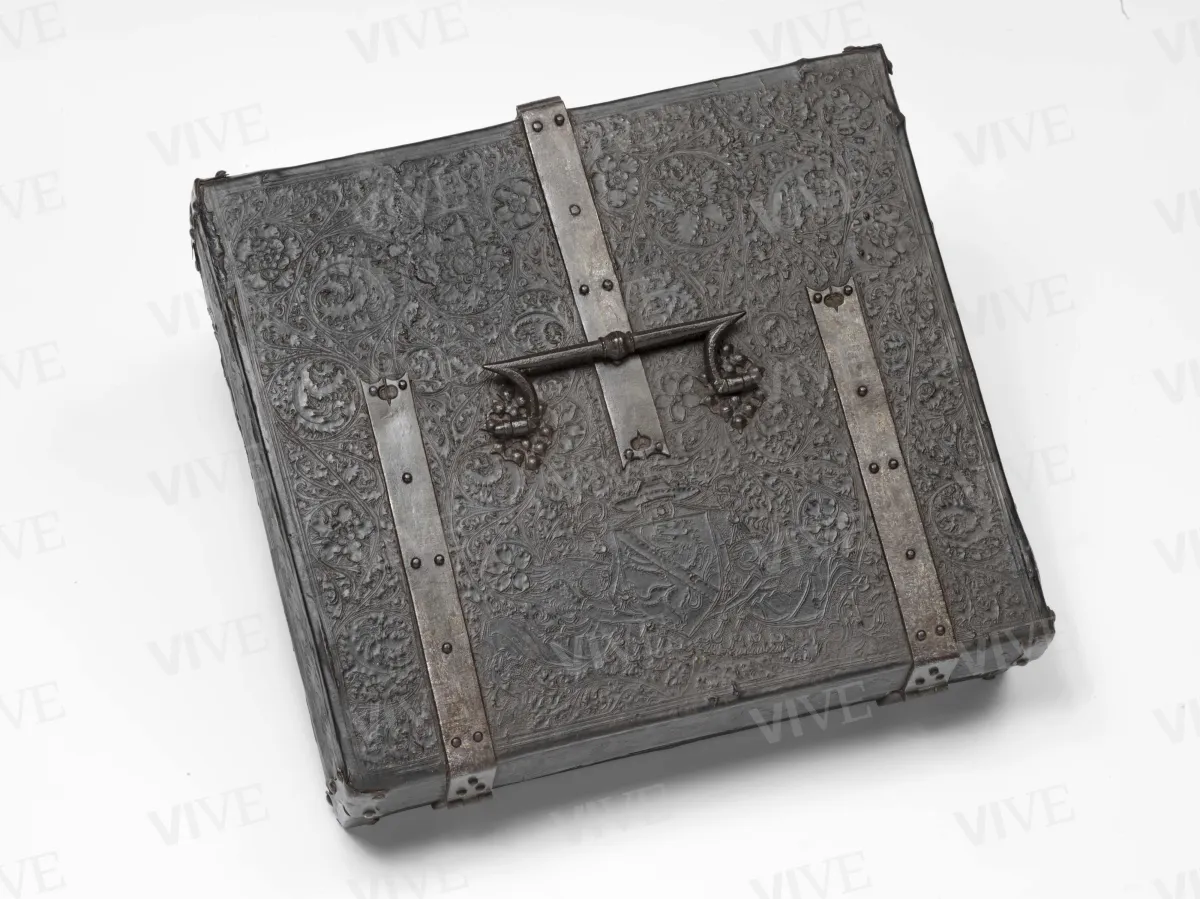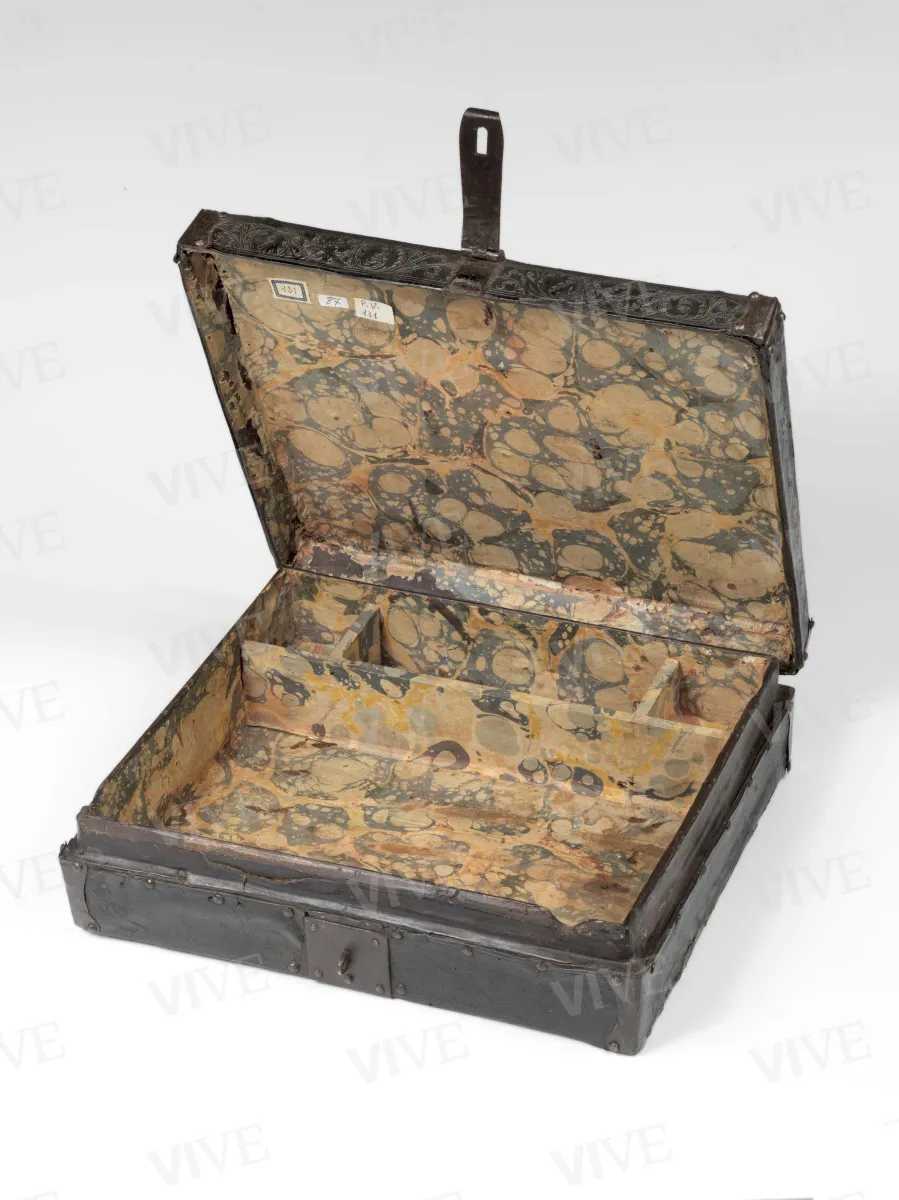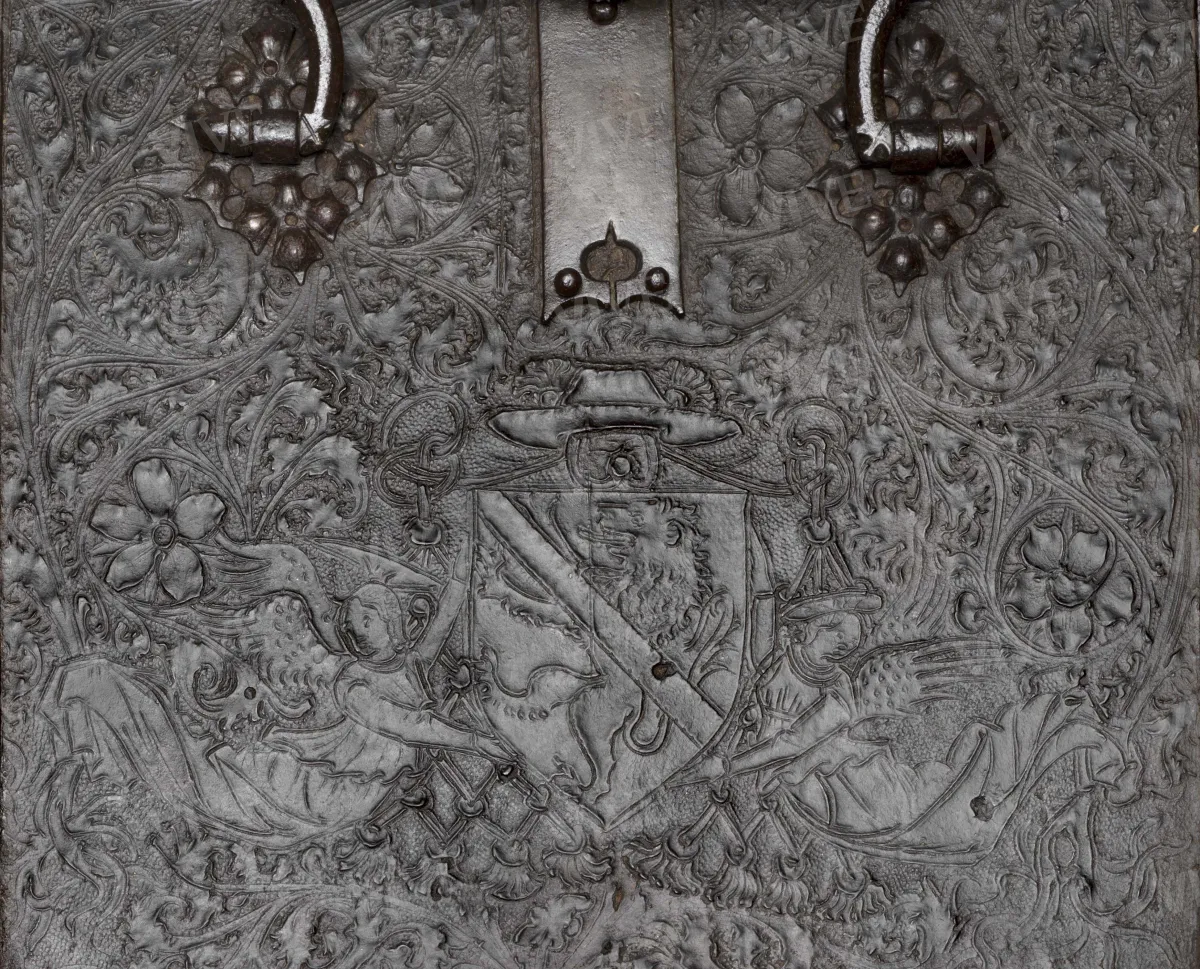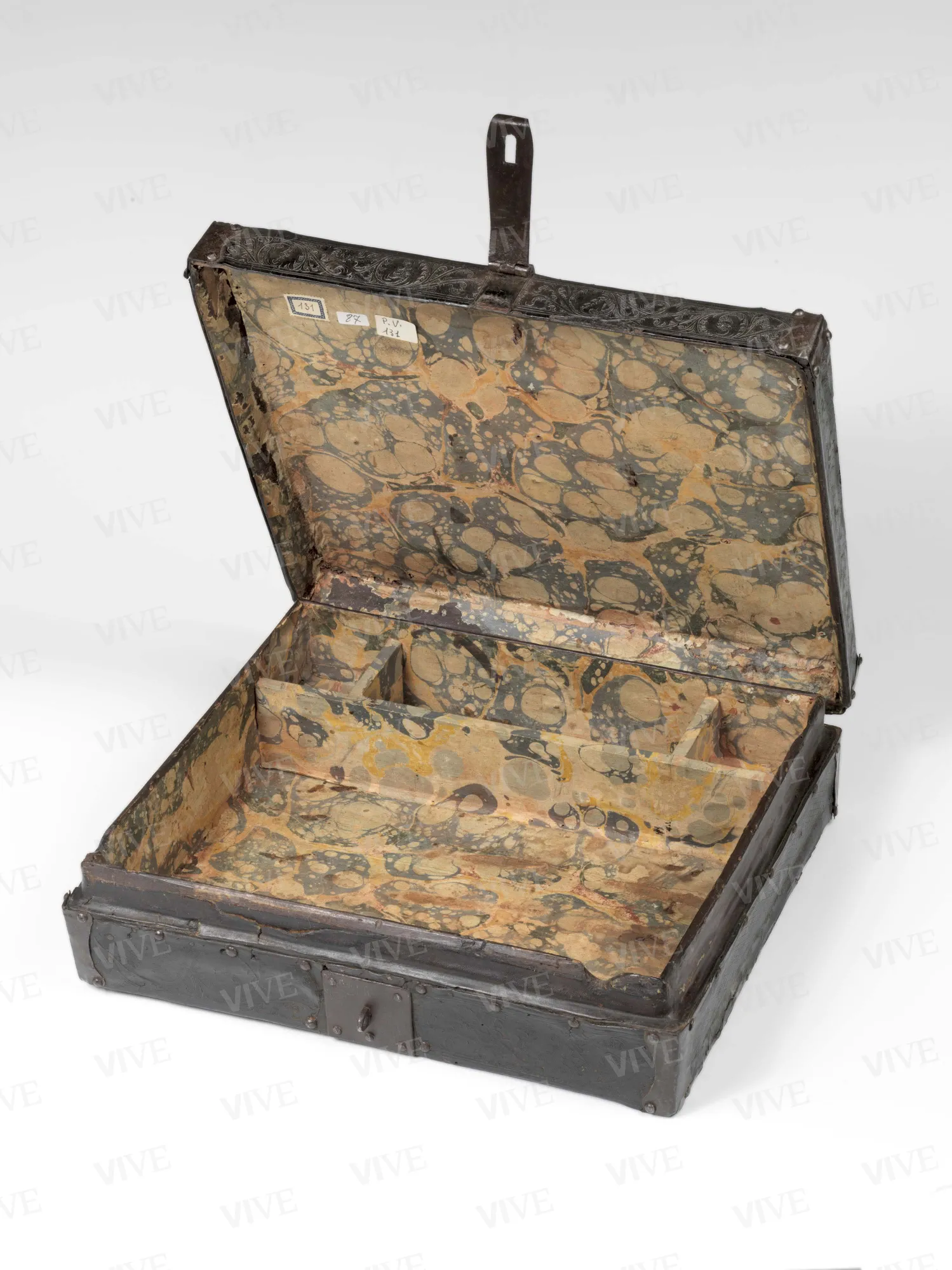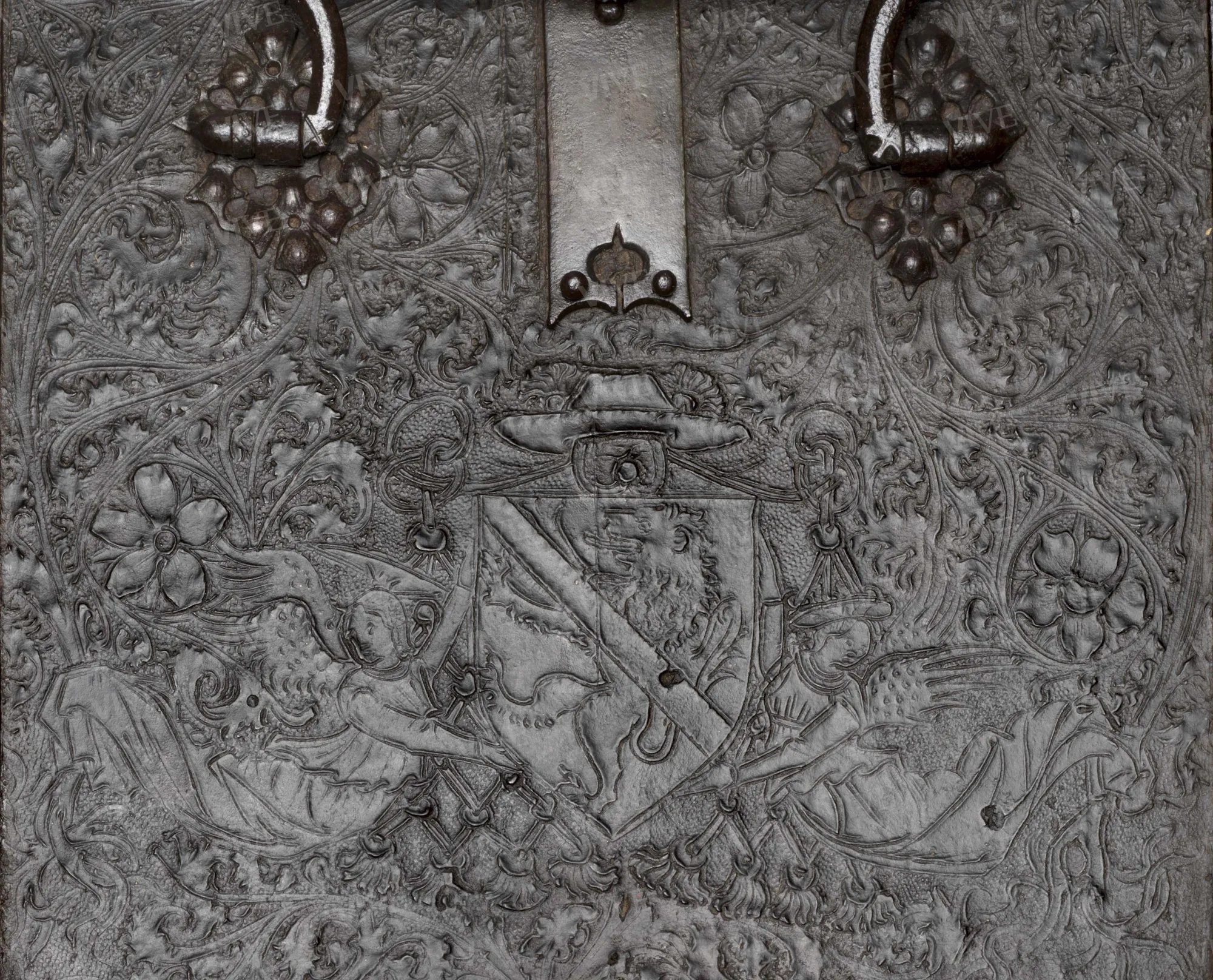Cardinal Pietro Barbo’s portable writing desk
Veneto milieu 1440-1464
This portable box or chest, likely used as a writing desk, belonged to Cardinal Pietro Barbo (1417–1471), who later became Pope Paul II. This is indicated by the cardinal’s coat of arms, supported by two angels on the lid beneath the handle. The coat of arms is set within an intricate decoration of racemes, flowers, and leaves, created through embossing and engraving the cuir bouilli that entirely covers this valuable artifact, crafted in the Veneto during the mid-fifteenth century.
This portable box or chest, likely used as a writing desk, belonged to Cardinal Pietro Barbo (1417–1471), who later became Pope Paul II. This is indicated by the cardinal’s coat of arms, supported by two angels on the lid beneath the handle. The coat of arms is set within an intricate decoration of racemes, flowers, and leaves, created through embossing and engraving the cuir bouilli that entirely covers this valuable artifact, crafted in the Veneto during the mid-fifteenth century.
Details of work
Catalog entry
The wooden-framed travel box features a cuir bouilli covering adorned with embossed motifs, engravings, and gilding. This cuir bouilli bookbinding technique (consisting of immersing leather in boiling water to make it waterproof) was subsequently applied to furniture and everyday objects. This particular artifact opens into two equal halves and includes reinforcing metal plates secured with studs at the corners, as well as three metal bands on the upper lid for hinges and a padlock. It has a wrought iron handle, engraved and decorated with plant motifs at the ends. The interior is lined with marbled paper that was added later, and there is a bulkhead dividing three small compartments of varying sizes along the longitudinal side, indicating its original function as a writing desk. The cuir bouilli is distinguished by an elegant symmetrical design of racemes, flowers, and leaves, whose ends are given in relief.
The lower half of the box features a simple small lozenge motif composed of horizontal lines. The edges are marked by a band secured by nails. In the center of the upper lid, below the handle, is the Barbo coat of arms, which includes a banded lion rampant, topped by the cardinal’s hat and flanked by two angels. This coat of arms belongs to Cardinal Pietro Barbo (1417–1471), who became pope in 1464 under the name Paul II and commissioned the Palazzo di San Marco, now the Museo Nazionale di Palazzo Venezia; it certainly does not belong to Pietro’s nephew, Cardinal Marco Barbo (Gradara 1918), as the patriarchal cross of Aquileia distinguishing his coat of arms is not present (Petrocchi 2018). The cardinal’s status helps date the object to after 1440—the year Pietro, at the age of 23, was appointed cardinal by Eugene IV with the title of Santa Maria Nova and bishop of Cervia—and before 1464, when he was elected pope.
The valuable desk, one of the few that can be directly traced back to Pietro Barbo's private life, was purchased in 1918 from the antiquarian Giuseppe Sangiorgi (Hermanin 1925, p. 658) and was brought to the Museo di Palazzo Venezia in 1919. In the first analysis of the piece, Costanza Gradara considered its Italian or foreign origins, suggesting a possible artist (perhaps a goldsmith) from Rome or, more likely, Florence in the latter half of the fifteenth century, familiar with Spanish ornamental motifs (Gradara 1918). Federico Hermanin, who facilitated the purchase, later attributed it to a fifteenth-century Venetian workshop, based on the commissioner’s provenance and a comparison with a leather knife sheath in the Museo Nazionale del Bargello in Florence (Hermanin 1948). The desk, restored as part of the Restituzioni project (2018), is currently displayed in the Camera della Torre in the Appartamento Barbo.
Lorenzo Mascheretti
Entry published on 27 March 2025
State of conservation
Good.
Restorations and analyses
2018: monitoring of the state of conservation and restoration of the complete legibility of the work, carried out by L’Officina Consorzio, Rome, with the collaboration of Eleonora Baldo.
Coats of arms, emblems, and marks
In the centre of the upper lid, under the handle: Cardinal Barbo’s coat of arms.
Provenance
Giuseppe Sangiorgi Collection, before 1918–1919;
Rome, Royal Gallery of Ancient Art;
Rome, Museo Nazionale di Palazzo Venezia, purchased 1918–1919.
Exhibition history
Turin, Reggia di Venaria Reale, La fragilità della bellezza. Tiziano, Van Dyck, Twombly e altri 200 capolavori restaurati, March 18–September 16, 2018.
References
Gradara Costanza, Lo scrittoio di Papa Paolo II Barbo, in «Cronaca delle Belle Arti», 5, 1918, pp. 32-35;
Hermanin Federico, Il Palazzo di Venezia e l’appartamento di rappresentanza dello Stato, in «La Rassegna italiana politica letteraria e artistica», vol. 16, fasc. 90, novembre 1925, pp. 656-664;
Hermanin Federico, Il Palazzo di Venezia, Roma 1948, p. 401;
Petrocchi, in Bertelli Carlo, Bonsanti, Giorgio (a cura di), Restituzioni 2018. Tesori d’arte restaurati, catalogo della mostra (Torino, Reggia di Venaria Reale, 28 marzo-16 settembre 2018), Venezia 2018, pp. 292-297, n. 29.

